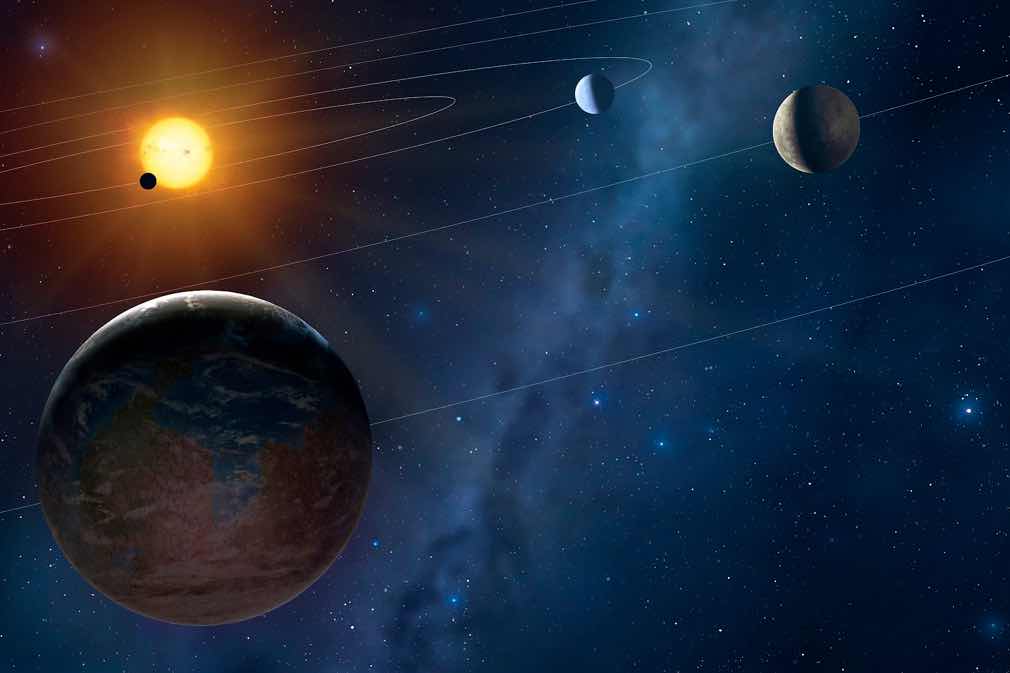French researchers claim to have created metallic hydrogen in a lab: Material can “conduct electricity indefinitely at room temperature”
02/09/2020 / By Arsenio Toledo

Metallic hydrogen is a state of hydrogen wherein the element is able to conduct electricity. Scientists have spent close to a century attempting to create this material. A team of French researchers now claim that they’ve done it.
Normally, hydrogen isn’t a great conductor. However, physicists since the 1930s have suspected that if hydrogen were to be subjected to enough pressure, it can act like an alkali metal, a group of metals that are great at conducting heat and electricity. This hypothesis has never been proven until now.
Paul Loubeyre, research lead and member of the French Atomic Energy Commission, believes he and his team have done the impossible. They say that a sample of hydrogen that they crushed between the points of two diamonds exhibited metallic properties. To put it into perspective, they claim that the hydrogen was put under pressure so substantial that it created around 425 gigapascals of pressure, or around 4.2 million times the atmospheric pressure of the Earth at sea level.
“Metal hydrogen is the ultimate hydride,” said the researchers in their paper, which they published in the journal arXiv. “It may exhibit a room temperature superconductivity, a melting transition at very low temperature into an unusual superconducting- superfluid state, a high protonic diffusion and a high energy density storage.” This means that the material can store energy very easily and it can conduct electricity perhaps indefinitely at room temperature.
The hunt for metallic hydrogen
Researchers have spent decades attempting to create metallic hydrogen. Previous studies came close, having created materials that, at lower pressures, exhibited some of metallic hydrogen’s properties. Scientists all over the world want metallic hydrogen because of its potential applications in future technologies, such as for transporting and storing energy. (Related: Researchers design cost-efficient, clean fuel cells that might soon replace traditional gas engines in cars.)
Until now, they haven’t been successful because of the high amount of pressure required for metallic hydrogen to form. Even many high tech research laboratories don’t have the equipment to create the conditions it requires. In laboratory settings, high pressures are generated using devices known as diamond anvil cells, which involve crushing a tiny sample of a material between the points of two extremely durable diamonds. So far, many experiments failed because even the hardest diamond anvil cells tend to shatter if they try to recreate any pressure above 400 gigapascals.
A previous study, conducted in 2016, claimed to have created metallic hydrogen. However, the researchers were only able to publish a limited amount of data. Furthermore, they refused to release the metallic hydrogen sample from the grasp of their diamond anvil cell device for fear of damaging it. Many scientists, including Loubeyre himself, were very critical of their claim and refused to believe it. Their criticisms were heightened when the scientists later claimed that their metallic hydrogen sample was lost when their diamond anvil cell device broke.
Fortunately, Loubeyre has more data to back up his team’s claims. For starters, Loubeyre’s diamond anvil cells were of a new design developed in 2018, which raised their high-pressure limits. Furthermore, the team claims to have repeated their experiment. They tuned the pressure up and down, causing the material to transition from metallic to non-metallic states.
However, even this study is under scrutiny because it hasn’t been subjected to peer review and Loubeyre’s experiments haven’t been inspected by the wider community of physicists. But it does have its fair share of allies, with some even going so far as to call this a “Nobel-prize worthy discovery.” With Loubeyre’s claims yet to be validated, it remains to be seen if metallic hydrogen and its possible applications for future technologies is finally within humanity’s grasp.
Sources include:
Tagged Under: breakthrough, breakthroughs, Chemistry, discoveries, energy, future science, future tech, future technology, metallic hydrogen, physica, science and technology
RECENT NEWS & ARTICLES
COPYRIGHT © 2017 CHEMISTRY NEWS



















